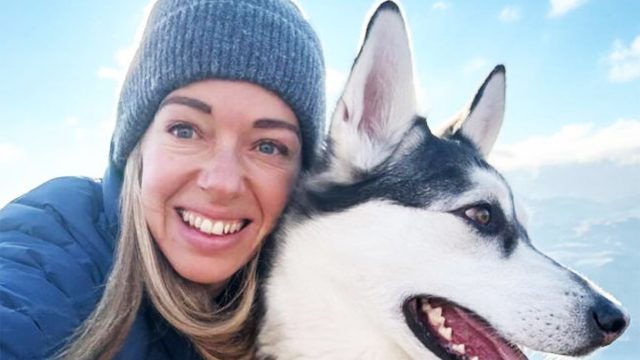I Help Women Over 35 Lose Weight: 9 Eating Errors You Must Stop Today
Are you prioritizing protein and cutting carbs but still struggling to lose weight? According to one expert, it might be because you are making a common protein mistake. Sarah Bouchard is a Nutrition Coach & Educator who helps women over 35 "ditch diet confusion & simplify nutrition" for "Sustainable fat loss + healthy body composition," she explains in her Instagram bio. "I made these mistakes for over a decade," she captioned a recent post, going on to reveal the most prominent protein and carb faux pas.
Protein Mistake 1: Not Eating Enough Protein
One common mistake is not eating enough protein. For example, if you have two eggs and a piece of avocado with some low-carb veggies, you aren't getting enough. "I don't care how clean your breakfast is. If you're not getting 30-35g of quality protein, you ain't triggering MPS, and your breakfast isn't doing anything for your body composition!" she says in her post.
Protein Mistake 2: Choosing High-Fat Proteins
The next mistake is that you are choosing proteins higher in fat. "I love a good ribeye just as much as anyone, but at the end of the day, if you're trying to lose body fat, calories still matter. There is a difference between high in protein and protein dense. A protein-dense option for red meat could look like a top sirloin, a fillet, or extra lean ground beef!" she says.
Protein Mistake 3: Assuming That All You Need to Do Is Increase Protein
Sarah emphasizes that "just increasing protein alone isn't necessarily going to get you the results you want if you are still in a calorie surplus," she says. "When I started tracking my food, I quickly realized that I was overdoing the 'healthy fats' on the side."
RELATED: I'm a Nutritionist and Here Are 4 Fall Comfort Foods That Can Help You Lose Weight
Protein Mistake 4: Relying Too Much on Protein Bars and Shake
Protein sources matter, and protein bars and shakes aren't the best type. "Protein is mostly helpful for satiety when it is in a whole food form. And satiety matters a lot if you are in a deficit. I love whey protein powder myself, but try to incorporate it into foods I can eat that are also mixed with whole foods and are higher in volume!" she says.
Protein Mistake 5: Sticking to Salads
Sticking to the "healthy" salad with 4 ounces of chicken instead of the lean steak with a baked potato and veggies might not be the best option, per Sarah. "Stop being afraid of protein! That healthy salad probably has more calories than the 6oz steak and will leave you ravenous for the rest of the day," she says.
RELATED: I Lost 30 Pounds in 6 Months Just by Walking: Here's How
Low Carb Diets Aren't Always the Best
In another post, she tackles the issue of being "stuck on low-carb" diets, offering a "quick nutrition 101 on macros."
- 1g of carbs = 4 calories
- 1g of fat = 9 calories
- 1g of protein = 4 calories
"So when you stop using oats and start putting almond flour in everything, you are effectively doubling the calories In that food," she says. "I go over women's food logs every day, and almost every single one of them makes the same mistakes," she says, going on to reveal them.
Carb Mistake 1: Trading Carbs for Fat
One common mistake is trading carbs for fats. "For example, she's restricting foods like fruits and starches, but she's loading up in the nuts and all the 'healthy fats.' Did you know that a cup of almond flour has over 600 calories, while a cup of oats has around 300? Sounds like a bad trade to me!" says Sarah.
Carb Mistake 2: Not Getting Enough Fiber
Another faux pas? "She's barely getting 15g of fiber per day," says Sarah. "Once again, the fear of carbs gets us doing weird stuff – like eating lots of high-protein & high-fat foods but skimping on fiber-rich fruits and veggies. And what happened to almost everyone I've coached who doesn't eat enough fiber-rich carbs? They have uncontrollable cravings in the evening!"
Carb Mistake 3: Adding Flax and Chia Seeds to Everything
She also sees a lot of people who think "that adding flax and chia seeds to everything is a great way to increase fiber," she says. "Sorry ladies, these foods are just a classic example of foods that are high in energy density and low in nutrient density – therefore, don't provide you any satiety!"
RELATED: I'm a Personal Trainer and These 5 Moves Banished My Clients' Bat Wings in Weeks
Carb Mistake 4: Not Eating Carbs for Breakfast
If you aren't eating carbs in the morning, you are probably going to be hungry later. "Either intermittent fasting and skipping breakfast" or "eating two eggs with some avocado for breakfast" is "not only a missed opportunity to trigger MPS (muscle protein synthesis) but also will guarantee her to be ravenous later on," she says. And if you enjoyed this article, take advantage of these 15 Quick Ways to Lose Body Fat Percentage in a Week.





